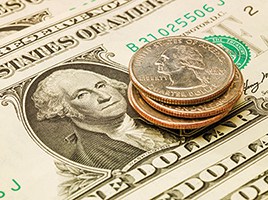By Kevin Theissen
Vladimir Putin’s invasion of Ukraine may have made you feel for the suffering of the Ukrainian people – and may have made you think that the issues in America may not come close in comparison. From a financial perspective, investors had been ready for a possible invasion for much of February. There was an increase in market volatility and a modest drop in the major indexes.
Since peaking on Jan. 3, the S&P 500 Index’s decline has been over 10%, which classifies it as the first official correction since the early days of the pandemic. Not all the sell-off can be blamed on the Russia-Ukraine crisis. Investors are also considering higher inflation and talk of higher interest rates from the Federal Reserve.
Historically, selloffs tied to geopolitical uncertainty have been limited. According to LPL Research, the market reaction to 22 geopolitical “market shock events” since WWII has shown on average, the total drawdown was just 4.6% for the S&P 500 Index. During the Cuban missile crisis, the S&P 500 lost 6.6% over eight days. At the time, the world appeared to be on the brink of nuclear annihilation. The biggest decline in LPL’s survey occurred after the surprise attack on Pearl Harbor. The index shed nearly 20% in 143 days but managed to erase losses within one year of the attack. Another example was Iraq’s invasion of Kuwait (which could be seen as a similar event to that before us), creating a 16.9% drawdown, but the market recovered within six months. As expected, the data shows that there is an immediate market reaction that is most dramatic, but the impact is short-lived for about one to three months. Most important, history shows that 12 months after the event, the market is typically edging higher.
Vanguard also performed a study, using data from Refinitiv, which examined major geopolitical events over the past 60 years and found that while equity markets often reacted negatively to the initial news, geopolitical selloffs were typically short-lived and returns over the following 6- and 12-month periods were largely in line with long-term average returns. On average, stocks returned 5% in the six months following the events and 9% in the 12 months after the events as shown below.
While we may have been due for a market correction, attempting to time such a pullback is all but impossible. There are those who have been calling for a correction for over a year and found themselves watching the major stock market indexes rise to new heights. Also, if you want to time the market, you must be right twice to be successful—near the top and near the bottom. The smartest analysts haven’t figured out that equation. They never will.
Trying to bet on a market bottom is a fool’s game but it’s comforting to know that in the 32 times the S&P 500 Index has fallen at least 10% since 1980, one year after hitting a bottom, the index was up approximately 24% on average. It was higher 90.3% of the time, again, according to LPL Research.
Market volatility can be frustrating but through diversification and managing your emotions, you can manage risk and find opportunities. When Art Cashen of UBS began on Wall Street over 60 years ago, a veteran trader told him, “The world only ends once. Don’t bet on the end of the world. The odds are way against you.”
Kevin Theissen is the owner of HWC Financial in Ludlow.




